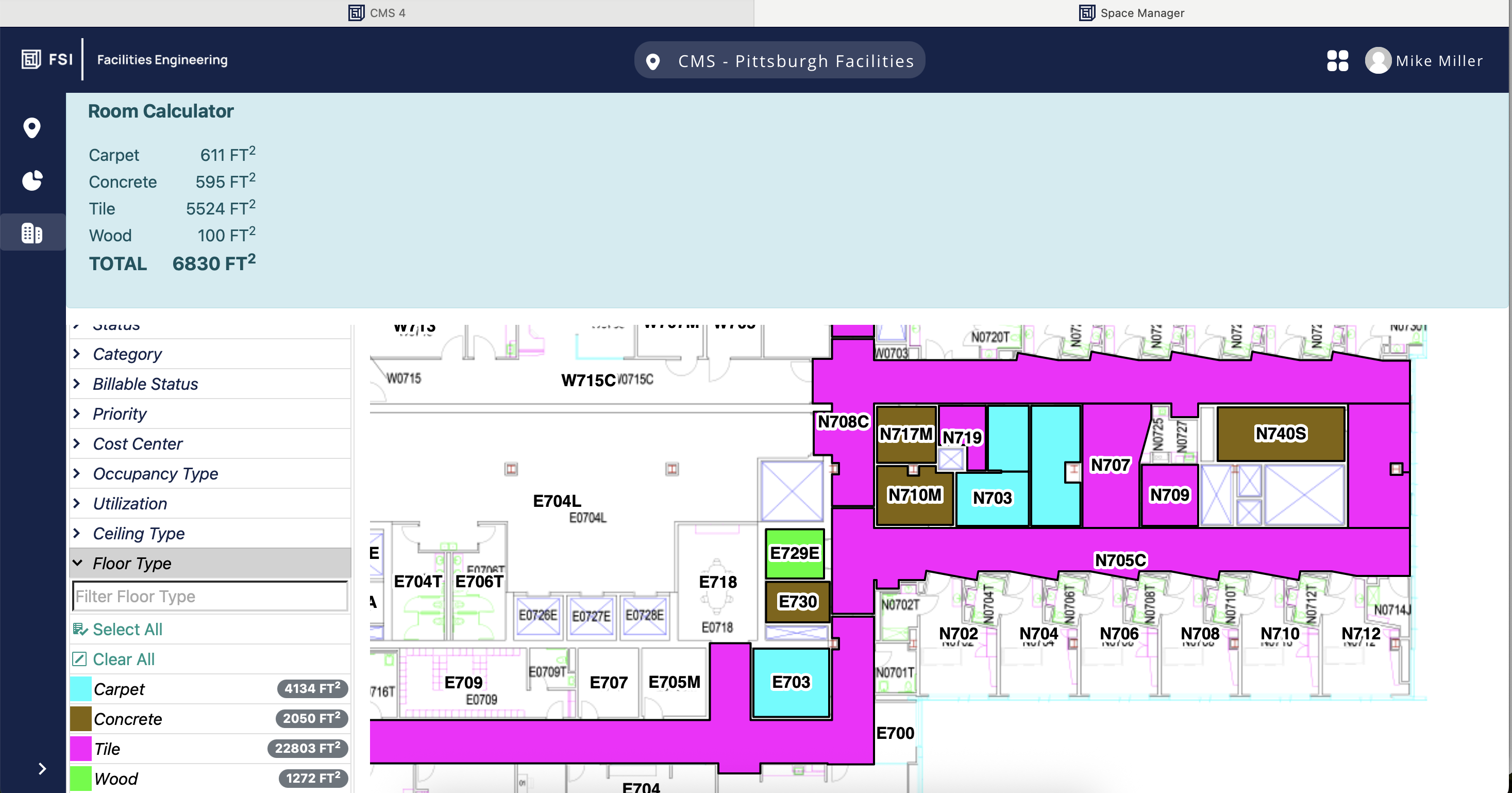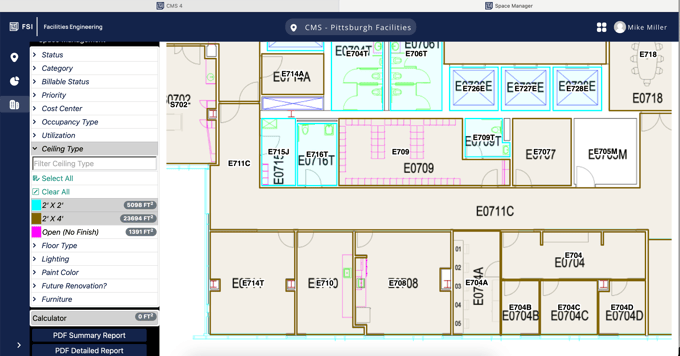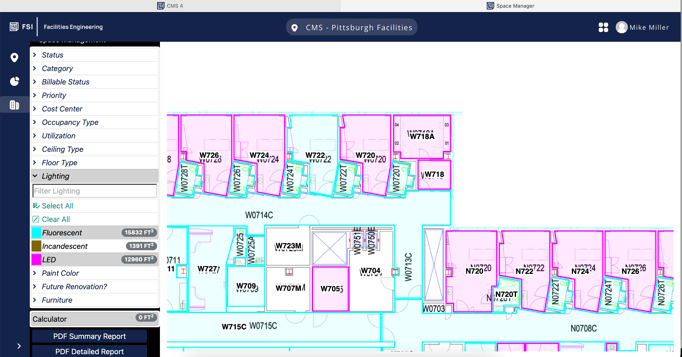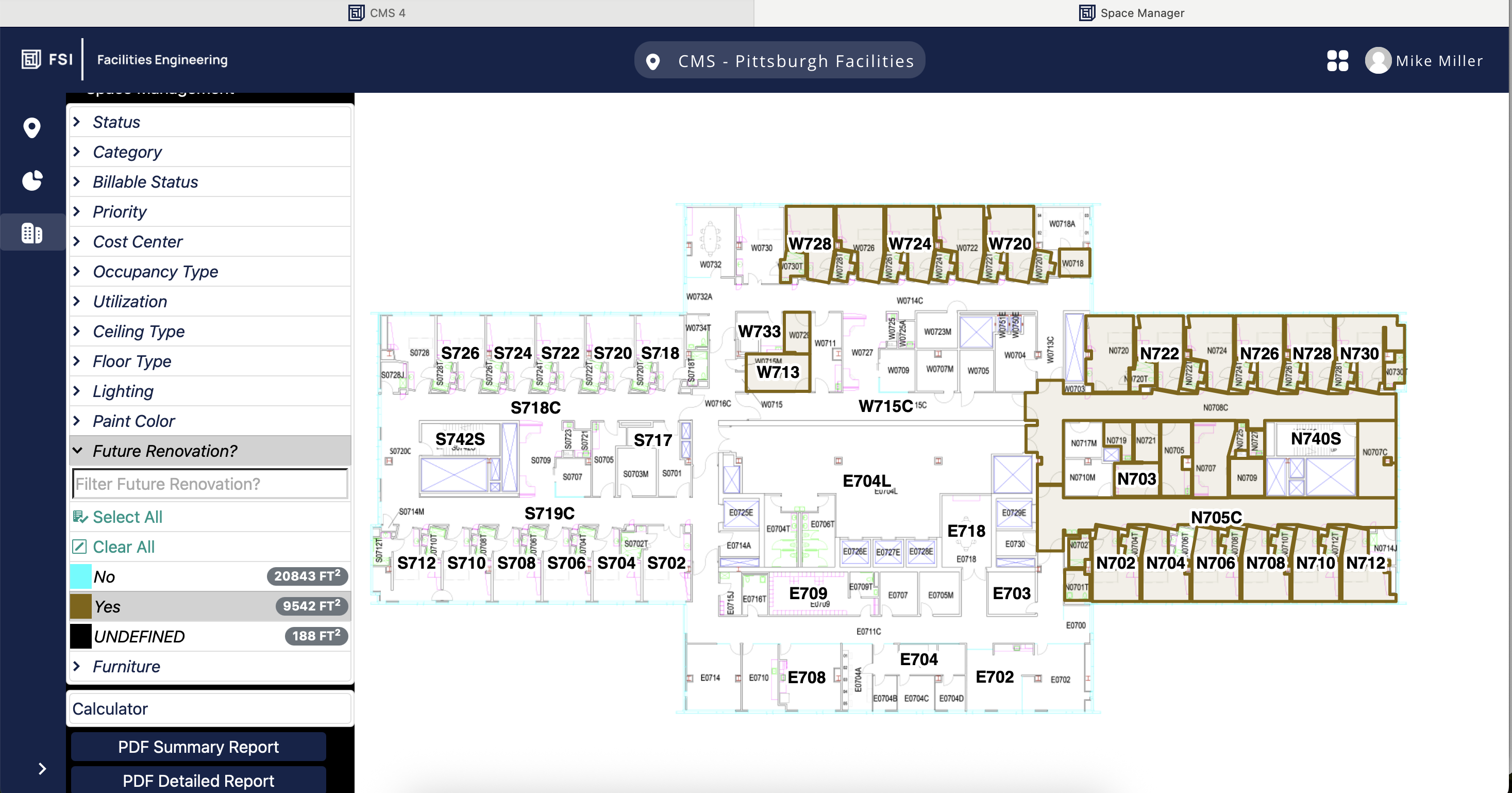Facility space management software plays a critical role in mapping, tracking, and maintaining hospital operations to deliver the best patient care.
At its core, space management software delivers functionality in visualizing layouts, assigning rooms, and managing inventory. But, its potential impact stretches beyond that. Space management software can play a larger role across maintenance, compliance, and even emergency preparedness.
Technician Efficiency
Many space management solutions operate independently as point solutions. Today, space information holds immense data that can be extremely helpful for facilities teams so sharing space data across solutions becomes more important. However, with a seamless integration with a computerized maintenance management system (CMMS) – or with both solutions being within the same platform – a space management solution can provide wide-reaching benefits for maintenance teams.
Space management data can provide a basis of information for work orders, either by filling in data automatically as work orders are created or by giving additional information for work orders as they are addressed by the field.

Providing easily accessible layouts to a maintenance technician anywhere in the facility provides a streamlined and efficient process to complete a work order. In the past, a technician may need to go back to the plan room in the facilities department to pull up a floor plan to see the layout. With a space management module seamlessly integrated with the CMMS, that individual can expedite the process from a computer or tablet while they are in the field.
For instance, if there’s a stained ceiling tile; the work order can be created and automatically leverage existing data in the space management module to provide insight into the type of ceiling, but it can also reveal if there’s something behind the tile that could be causing issues.

This can streamline maintenance by providing a deeper layer of information that can inform the next best action, reducing the need for multiple follow ups or visits to that area to complete a work order.
Additional information about the space, including the type of material or structure that may be present, gives technicians insight into what they will need to complete the request. From tools to additional resources, the additional space management data can reduce the time required to complete the work order – so they are able to fix the issue faster. See what data can be captured in your facility space management software
Compliance
Given the complexity of meeting compliance and regulatory requirements, there are several features within a facility space management software program for hospitals that can provide support.
At its core, a space management solution provides a centralized system of record about rooms and areas in the hospital, ensuring clear documentation around safety components. But, there’s so much more that a space management solution can do for facility teams today.
Preventive Maintenance: Space data combined with maintenance history provides deeper insight into how physical spaces are being used. For instance, components that power a critical operating room may require more proactive maintenance activities to prevent future issues. With the ability to see maintenance activities from a space-first perspective, it can help indicate key areas of focus while ensuring that the actions – and collected data – meet regulatory requirements.
Risk Reduction: Pinpointing exactly where repairs need to be completed within the hospital provides several benefits. Considering the complexity of hospital rooms and spaces, the additional layer of data related to the space can ensure that maintenance gets completed on the right assets? Work orders?. As a result, the CMMS holds a record of where repairs were made – and how it supports the overall facility.
Data & Reporting: From using data to inform critical decisions to having a record of maintenance, additional insight into work orders with space management data layered within can be extremely beneficial for reporting to meet compliance standards. For instance, it can demonstrate how the facility manages key standards like Environment of Care, Life Safety, and Emergency Management by detailing it with specific location information.
Read more about modernizing your compliance management
Emergency Preparedness
When there’s an emergency, it requires swift action. Without a facility space management software in place, it may result in a scramble to get the data required on the impacted area to understand what needs to get the space back to a functioning level.
Space management software can show a technician what corresponding or related items are in adjacent spaces. And, it’s important to note that this can be done while in the field from a technician's phone or tablet. From showing which rooms have valve controls to identifying connection points for mechanical features, it easily identifies where key issues should be fixed.
If there is an unplanned (or even planned) shutdown, the space management solution can indicate where mechanical equipment like the HVAC is located. Using color coding within the software, it can help to indicate what may be impacted by the shutdown.

In situations where a fast response may be required, this level of detail enables hospital staff to see the exact information they need. If third-party vendors need to be engaged to repair an issue, the software can make it easy to seamlessly – and quickly – share facility layouts, even before they arrive on site.
A deeper layer of information regarding the mechanical engineering and plumbing components of the hospital can deliver information in critical instances – all while providing essential insight into the work order process as well. Learn how to use your CMMS for emergency preparedness and rapid recovery
Capital Planning
As hospitals are faced with smaller budgets and aging equipment, getting insight into where to invest from a capital planning perspective becomes even more important. Facility space management software provides insight into key information about spaces to better inform capital planning requests and ensure that requested budget aligns with actual costs.

Tracking the finishes within a space can deliver detailed insight into what costs may be associated with renovating an area. The space management solution also tracks square footage; so it’s always clear the impact of this on cost as well.
Even more important, access to space data during the capital planning process can demonstrate where maintenance activities most commonly occur. With additional data within the work order, it can help indicate key areas that require the most reactive maintenance – and why. This space-specific data can be instrumental in building a capital plan focused on addressing the costliest issues (and preventing bigger issues from arising). Read more about capital planning for healthcare
Due Diligence for M&A
Over the last several years, mergers and acquisitions have become a key trend in the healthcare industry. Whether a hospital is being acquired or making the acquisition, having insight into the space within the hospital can be beneficial to understand. After all, the condition of the building can give an indication to future operational costs and capital expenses. In addition, it can highlight any issues with regulatory compliance – which can be costly on their own accord if not adhered to properly.
The facility space management software can validate key information to indicate:
- How space is currently being used and the condition of the space
- Insight into profitability across the facility
- Detail into key issues and how they are addressed
More data around the facility and how it’s used becomes critical to understand in a merger or acquisition scenario. Quick access to floor plans can provide insight into how the current facility supports patient flow, and the delivery and future growth of healthcare services.
Adding maintenance records as a component of space data reveals information about how building equipment has been maintained – and what future investments may look like in the short- and long-term. As these financial deals often focus more on the viability and strategic fit of a hospital and its services, this information can help reduce risk and inform critical decisions related to the merger or acquisition. See the power of analytics for evaluating hospitals spaces and facilities
Facility space management software has the potential to become a core component of the overall operational strategy for the hospital. To do so, it requires that the software seamlessly integrated with other key tools to maintain the physical space – and align with compliance strategies. FSI’s CMMS leads the industry with its functionality for healthcare and hospital systems; and with its work order management and space management modules built on the same platform, it results in seamless data transfer for deeper insight across several key use cases for healthcare leaders and their teams.
Ready to learn more? Chat with our team to see how FSI’s facility space management software can work for your specific use cases.